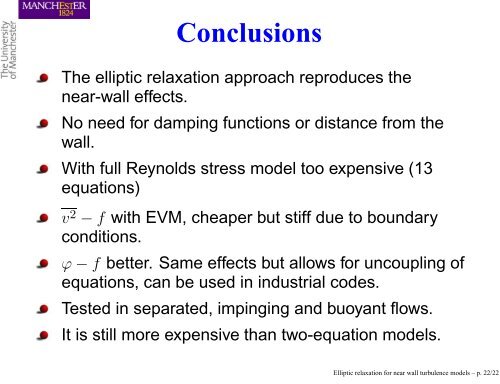Elliptic relaxation for near wall turbulence models
Elliptic relaxation for near wall turbulence models
Elliptic relaxation for near wall turbulence models
You also want an ePaper? Increase the reach of your titles
YUMPU automatically turns print PDFs into web optimized ePapers that Google loves.
Conclusions<br />
The elliptic <strong>relaxation</strong> approach reproduces the<br />
<strong>near</strong>-<strong>wall</strong> effects.<br />
No need <strong>for</strong> damping functions or distance from the<br />
<strong>wall</strong>.<br />
With full Reynolds stress model too expensive (13<br />
equations)<br />
v 2 − f with EVM, cheaper but stiff due to boundary<br />
conditions.<br />
ϕ − f better. Same effects but allows <strong>for</strong> uncoupling of<br />
equations, can be used in industrial codes.<br />
Tested in separated, impinging and buoyant flows.<br />
It is still more expensive than two-equation <strong>models</strong>.<br />
<strong>Elliptic</strong> <strong>relaxation</strong> <strong>for</strong> <strong>near</strong> <strong>wall</strong> <strong>turbulence</strong> <strong>models</strong> – p. 22/22















